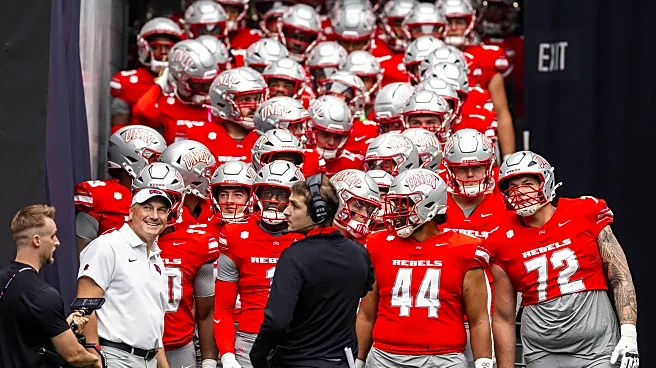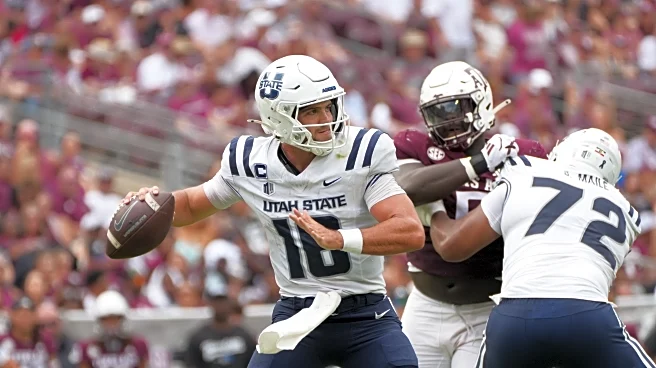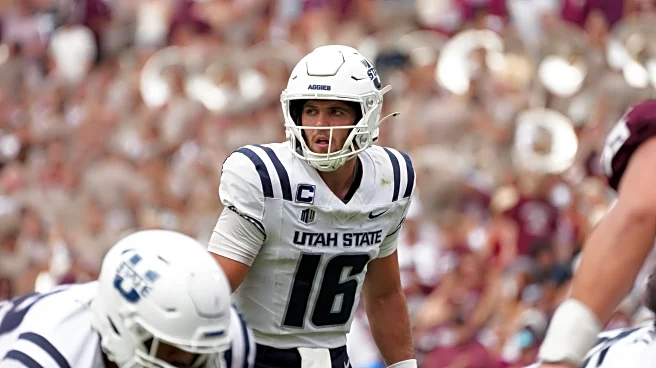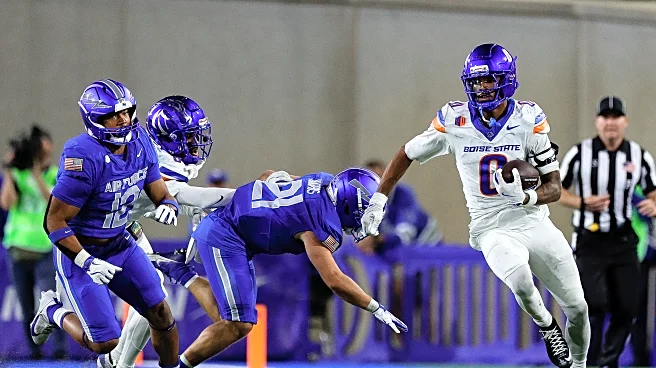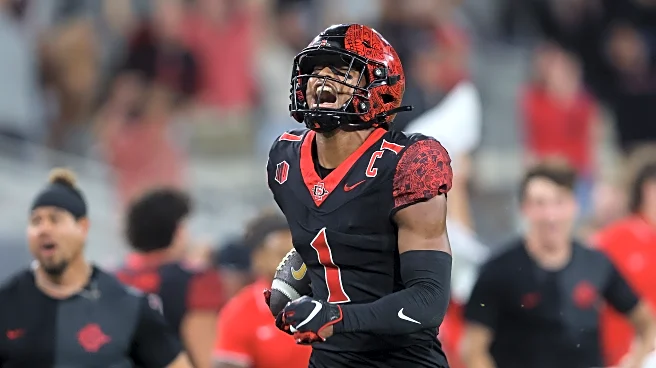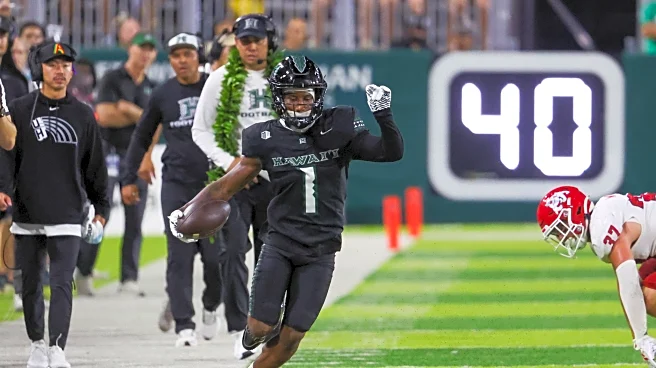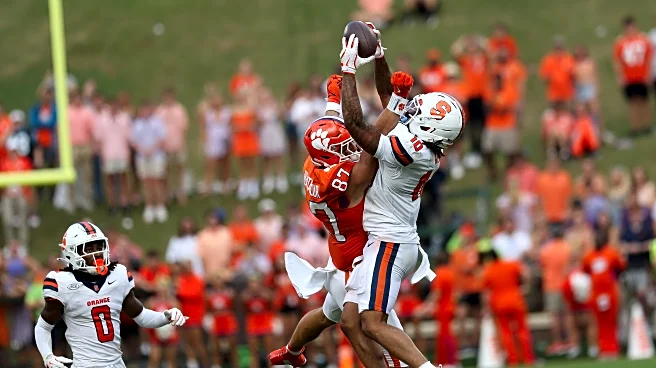Location: Colorado Springs, CO (Falcon Stadium) Date/Time: Saturday, September 27 th at 2 p.m. (MT) Television: FS1 Radio: KVOR AM 740, Colorado Springs Head-to-Head: Air Force leads the all-time series
14-8-1. They last met in 2023, and Hawaii won in Colorado Springs by a score of 27-13. As Air Force and Hawaii prepare to meet for the 24 th time, both teams do so coming off of Conference losses the week prior. For Air Force, this would be their third consecutive Conference loss, going 0-3 in Mountain West play to start the year. Their second loss which came at the hands of Boise State last week continued an alarming trend which their defense has really struggled. It wasn’t all bad despite surrendering 49 points to the Broncos. Offensively, the Falcons continued to get better, now boasting the top scoring offense in the Mountain West. Things look to be settling nicely under center, after a spectacular performance from Liam Szarka which he threw for almost 250 yards, and rushed for another 100. Hawaii’s loss from an emotional perspective may have been a little more devastating. They were a 2-point conversion away from tying it up in the final moments, only to see Micah Alejado’s pass attempt land incomplete securing the 23-21 win for Mountain West departers, Fresno State Bulldogs. This week’s game may not break the Bows’ season if they lose, and fall to 3-3 (0-2) on the year. But it would inflict critical damage to the Falcons should they drop another one at home and fall to 1-3 (0-3) on the year. Three things to look for:
- Trends
There are a number of areas that Air Force is trending up, which may seem ironic considering
they are coming off of consecutive losses. The run game continues to move the chains,
averaging just under 270 yards per game, taking their usual place atop the Conference. The only
thing that has really inhibited the rushing attack thus far are turnovers and penalties. The
biggest differentiator that started to rear in last week’s loss was the play of quarterback Liam
Szarka. Troy Calhoun has made it clear from the start of the season, both Szarka and Josh
Johnson would play. But after the performance Szarka delivered against Boise State, it’s hard to
believe he’s not the guy no matter what the publicly released depth chart says. Improved
quarterback play and a strong rushing attack can be neutralized very quickly by turnovers
though.
Which leads me to the negative trends. Turnovers will be our starting point here. The Falcons
coughed the ball up three times against Utah State and one more time again last week (3
interceptions/1 fumble lost). To be fair though, last week’s interception came very late in the
game when play-calling dictated a lot more high-risk throws in obvious passing downs.
Hawaii fans don’t want to hear about interceptions though. Fresh off of a three-interception
performance from Micah Alejandro in last weeks loss, their offense has turned the ball over 11
times now, seven of those coming by way of picks. Turnovers are always an alarming trend
unless you are the team causing them.
- Run Defense
For all the good things that Air Force has gotten done on the ground when they have the ball,
they have been equal parts bad at defending the run. Even with the rough start the completely
turned over defense had last year, they didn’t bottom out the way this defense has. Currently
last in the Mountain West (118 th nationally), Air Force is allowing 188 yards per game on the
ground. This is uncharted territory for Brian Knorr’s defense. They’re about to face a rushing
attack that is averaging less than 100 yards per game on the ground. Something will have to
give between these two units on Saturday.
Contrary to their rushing attack, the Bows’ run defense has been very stout statistically. To
date, they’re allowing just 110 yards per game on the ground, that is second best in the
Conference (29 th nationally). I’m not sure Hawaii has faced a rushing attack like they will see on
Saturday, but to their credit, they have held up well against the competition they have
encountered, which includes two “Power 5” programs in Arizona and Stanford. Albeit with far
less success against those two hailing from the ACC and Big12 respectively.
The outcome of this game may very will be tied to the winner of the battle between the Air
Force Diesels, and Hawaii’s front seven. - Playmakers
Both of these teams have guys on their side that can make big plays. Depending on how you
categorize the Air Force Swiss Army Knife Cade Harris, one might say this game features two of
the most dynamic receivers in the Conference.
The aforementioned Harris was mostly kept in check on the ground last week against Boise
State. But he more than made of for it with his 177 yards receiving. In three games this year,
Harris has just under 500 yards of total offense, averaging 14 yards per touch from scrimmage.
For Hawaii their big-time threat comes by way of Pofele Ashlock. While his numbers aren’t
gaudy yet this season, they are very respectable. He’s averaging over 60 yards receiving per
game, with three touchdowns on the year. When you consider the number of times the
Rainbow Warriors have turned the ball over, Ashlock is doing quite well. Probably more notable
is that he’s done it consistently for a few years now. The Junior pass catcher has over 1,700
receiving yards and 18 touchdowns in his career. And let’s not forget, the last time he played
Air Force, he came away with two touchdowns.
Something I did not expect to be saying headed into a match-up; the Falcons top receiver has
more yards than Hawaii’s. And it is worth noting, Ashlock has played in two more games than
Harris. Sit back and enjoy these two on Saturday.
Prediction:
This game looks off when you focus on the statistics. Hawaii has displayed a pretty average
passing attack, while being led by their defense. Air Force hasn’t been able to stop the run but
is one of the nation’s leading teams in pass efficiency. Maybe it’s because of historical context,
which really shouldn’t mean a lot as these are two different teams this year than they were in
the past. But it just feels like some of those trends have to change. Specifically, the first few
that I cited.
I expect the Hawaii passing game to get a lot better. Currently they rank 120 th in offensive pass
efficiency. I also expect the Air Force defense to get better as they are the 118 th against the run,
131 st in pass defense efficiency and 123 rd in total defense. I think this game will show
improvements from both teams in three of the four areas that just mentioned. I’m not sure this
is the game that Air Force will see a jump in their pass defense efficiency.
Much of that is because I think they are going to score points against Hawaii, and thus the
Bows’ are going to throw the ball a lot. I also think the rush defense numbers for Timmy
Chang’s defense are a little diluted, as they gave up almost 400 yards on the ground against
Arizona and Stanford, while looking much better against lesser opposition. So, the reality is
probably somewhere in between.
The most puzzling and disappointing area of the Air Force defense has been the defensive front
thus far. This should be a position unit of strength, and for whatever reason it hasn’t yet been.
You might expect a very young secondary to be culpable for surrendering big plays. But the
front seven have been really challenged. The players that make up that group are too good to
allow that to continue in my opinion. With Zdroik, Grobe, Swartz and Adams up front, they
should be making life very difficult for the opposition. Hawaii has allowed 11 sacks on the year,
while Air Force is accumulating three per game. This has to be a get right game for that unit if
they want to win.
The Air Force Fighting Falcons are going to get just enough improved play from that defensive
front to complement their offense and make a difference.
Air Force sings second, winning by a score of 31 – 27.


